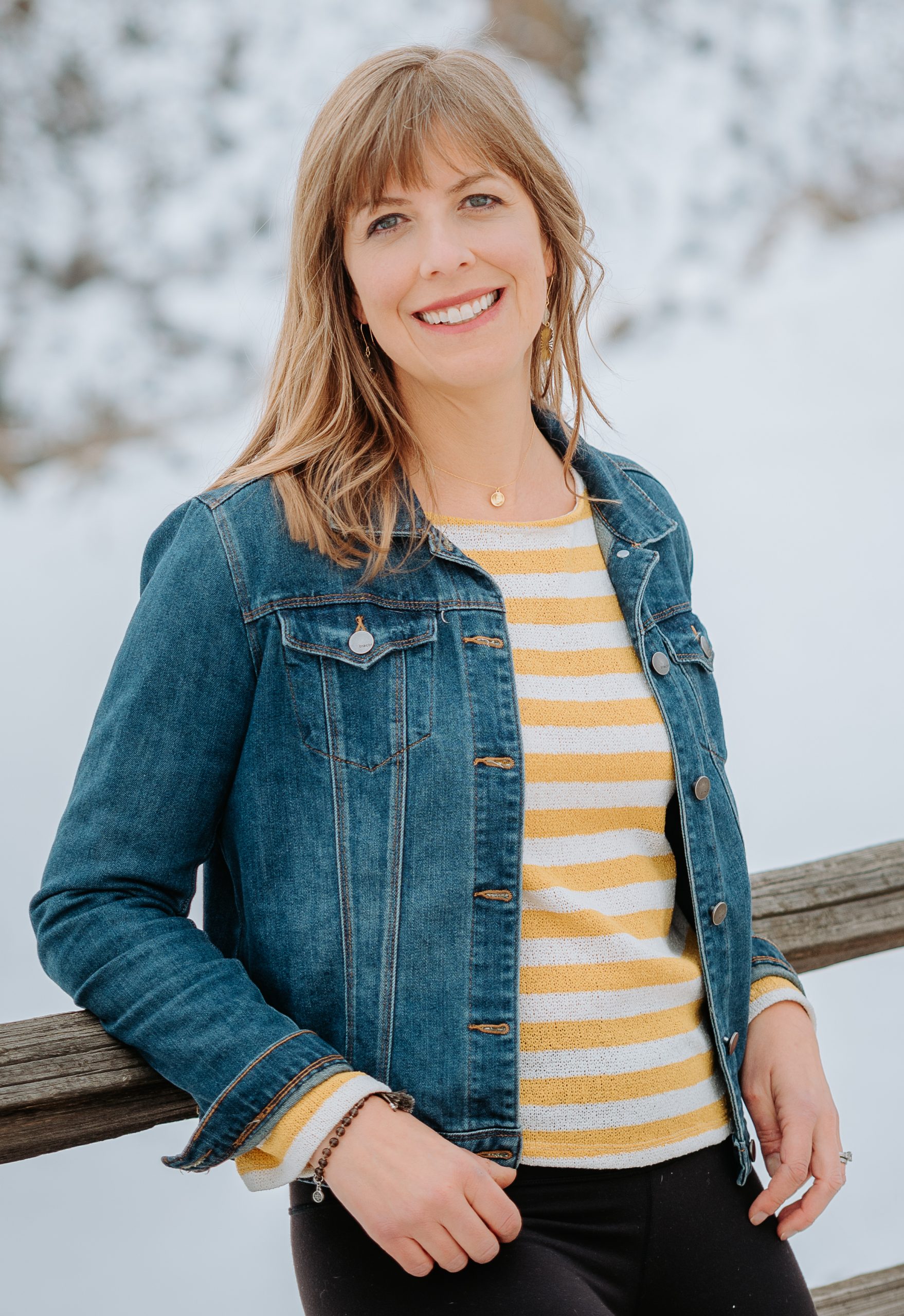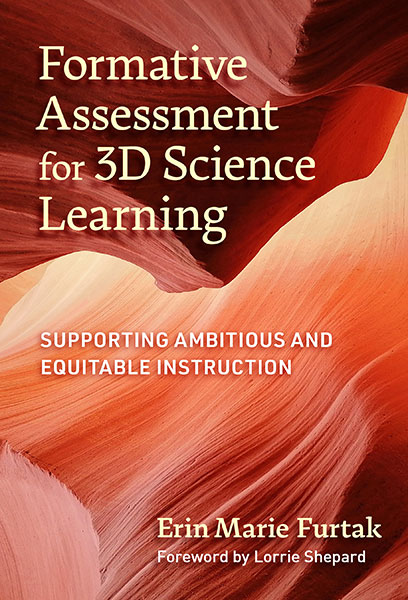 Erin Marie Furtak is professor of STEM education at the School of Education, University of Colorado Boulder. Dr. Furtak received the 2011 Presidential Early Career Award for Scientists and Engineers (PECASE) and the German Chancellor Fellowship from the Alexander von Humboldt Foundation (2006).
Erin Marie Furtak is professor of STEM education at the School of Education, University of Colorado Boulder. Dr. Furtak received the 2011 Presidential Early Career Award for Scientists and Engineers (PECASE) and the German Chancellor Fellowship from the Alexander von Humboldt Foundation (2006).
She is the author of Formative Assessment for 3D Science Learning: Supporting Ambitious and Equitable Instruction.
Summer is a wonderful time to slow down and notice nature around us in all its complexities. Just the other day, on the way back from a neighbor’s house, I passed a stand of wild prairie grass that I’ve probably walked past countless times in the last 10 years. But this time, in the early evening light, I noticed something new: tiny yellow flowers, barely suspended by thin tendrils, hanging from the end of shoulder-high blades of grass.
Beside them, and maybe for the first time, I noticed other, totally different kinds of grass. One had brushy, faded tips; as a child, I used to pluck such pieces of grass on hikes with my family, sometimes using them to tickle one of my brothers’ ears just to annoy them. Another was a darker green, with clusters of fronds at the tops that looked more like trees. Behind the grass I saw a stand of short prickly pear cactuses, all throwing out their beautiful yellow blossoms towards the sky. To the sides were light green sagebrush bushes, milkweed, and more, too many to count, and so many whose names I didn’t know.
I contemplated the complexity of factors that contributed to this ecosystem, growing in an untended area near a path by my house. It’s been an unusually wet year in my part of Colorado, and evidence of the interaction of the cooler days, plentiful rain, and sunshine are evident. If I were to uproot some of the grasses, the cacti, the sagebrush, or any other plant from this environment, would I be able to fully comprehend it, and all the complexities and interconnections in its habitat?
Pausing to notice the larger ecosystem supporting these plants helped me to appreciate the incredible biodiversity of a high shortgrass prairie ecosystem. It also reminded me of how—in the context of my writing and research—I seek to look more broadly at school assessment to transform learners’ experiences in classrooms, schools, districts, and states.
When it comes to classroom assessment, I’ve noticed that we often take a simple lens. We tend to look at individual learners, asking them questions alone, or giving them a written task to “see what they know and can do.” But what are we missing when we consider only what they individually know and can do, in that moment of assessment in the classrooms? Is this a fair and accurate representation of who the student is in the totality of their life experience?
In science education, for example, our focus is often on designing tasks that help to capture student learning performances on the complex Next Generation Science Standards. However, a focus on tasks alone is just a part of the picture. A single assessment task is part of a larger system. To best capture what learners know, and in order to best support their learning, we must take a broader perspective—that is, we must look at the larger ecology of the assessment system (Kang & Furtak, 2021).
Learning theorists encourage us to consider the larger activity systems of learning environments (Engeström, 2001; Greeno, 2006; Moss, 2008). When it comes to assessment in general or, as is the focus of my research, formative assessment, we can think of several elements to inform how we plan for and enact classroom assessments.
Purpose of the activity
First, it’s important to get clear on what the purpose of the assessment is in the first place. Is it to check for understanding while learning is in progress to provide students with feedback, or to determine if they’ve met larger learning goals for a unit, or for a course? What are the myriad ways students will show what they know—through discourse, drawings, multimedia presentations, videos, or other performances?
Participants
While we often think about learners as the primary participants in assessment, it’s important to also consider how learners can support each other and work together in surfacing what they know, even providing each other with support and feedback that advance their learning. Teachers are also key participants in classroom assessments, making decisions about what is assessed and how, grading student work, and providing feedback.
Mediating tasks and artifacts
These are the tasks and other activities designed to compel students to show what they know and what they can do. The term “tasks” can give the impression of something on paper or a Google Doc, but they can be much broader than that—a teacher’s request for students to draw initial models of a puzzling phenomenon, for instance, or even a set of questions that students ask each other to reflect upon and provide each other with feedback on their learning.
Implicit and explicit norms
What are all the ways, implicit and explicit, that govern how learners and teachers interact in assessment settings? Who talks, when they talk, and who is positioned as a knower—these are all governed by norms in the classroom. Making routines around sharing student thinking, and listening to and responding to each other, can help to level the playing field around how to participate, especially early in the school year.
Community
While we often consider assessment as an activity conducted with individual learners, we can broaden our lens to consider the potential collaborative and communal nature of learning. Whole class and small group conversations, for instance, can both serve assessment functions, particularly when our goal is to develop and extend student thinking.
Division of Labor
Finally, division of labor refers to who is doing what in the ongoing activity, such as students listening to each other, or asking questions of each other. It is important to plan these kinds of participation structures carefully, so we’re considering a broader set of interactions around a task, not just a learner answering a set of questions on their own.
As a teacher, researcher, and facilitator of professional learning environments, I pull on these elements of a classroom activity system to inform how to plan for, enact, and reflect upon assessments with colleagues. We’ll start by getting very clear on why we’re assessing in the first place, and when that will happen. Then we design classroom assessment tasks, doing so with knowledge of the learners, their histories, and life experiences, languages, and interests. We consider our own identities as teachers, how we experienced school, and the subjects we are teaching as part of the assessment. In advance, we plan how learning will be organized around the tasks and how we’ll set up norms and routines for learners to participate and support each other.
As the summer moves forward and the grassland slowly becomes dormant ahead of a drier fall and colder winter, I’ll keep it in mind as a key metaphor to remind me of all the elements we must consider to best support assessment of ambitious teaching and learning reforms in our classrooms.
References
Engeström, Y. (2001). Expansive Learning at Work: Toward an activity theoretical reconceptualization. Journal of Education and Work, 14(1), 133–156.
Greeno, J. G. (2006). Learning in Activity. In R. K. Sawyer (Ed.), The Cambridge Handbook of the Learning Sciences (pp. 79–96). Cambridge University Press.
Kang, H., & Furtak, E. M. (2021). Learning Theory, Classroom Assessment, and Equity. Educational Measurement: Issues and Practice, 40(3), 73–82.
Moss, P. A. (2008). Sociocultural implications for assessment I. In Assessment, equity, and opportunity to learn. Cambridge University Press.

Formative Assessment for 3D Science Learning
Supporting Ambitious and Equitable Instruction
Erin Marie Furtak
Photo courtesy of the author
